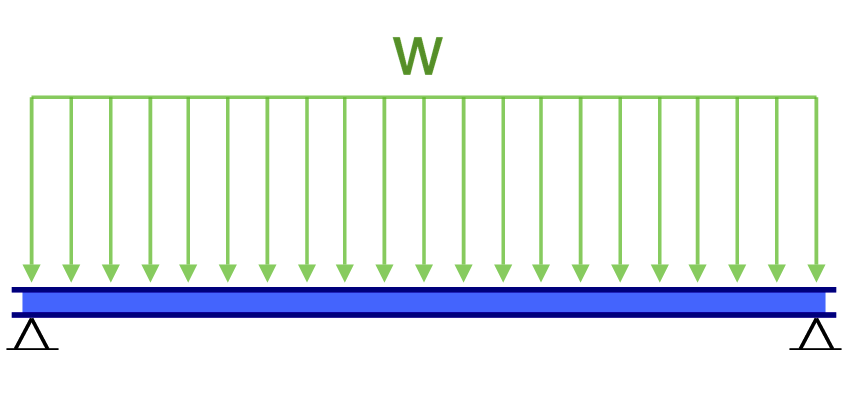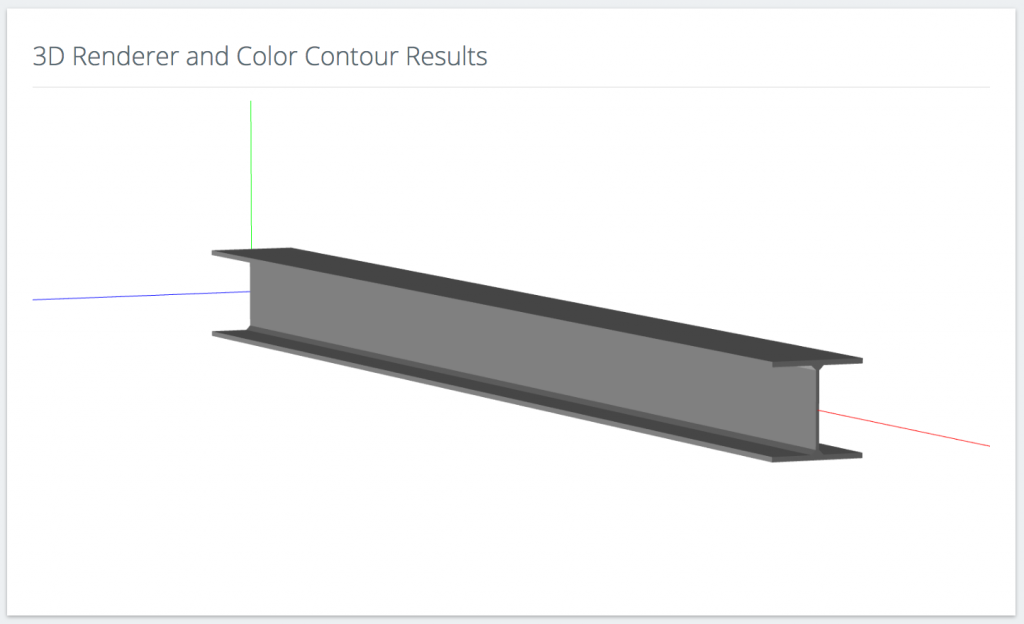What is a Beam?
Beam Definition: What is a Beam?
A beam, in Structural Engineering terms, is a member that can be comprised of a number of materials (including steel, wood aluminum) to withstand loads – typically applied laterally to the beam axis. Beams can also be referred to members, elements, rafters, shafts or purling.
A beam can exist within a frame, a truss or on its own as its own structure. SkyCiv also has some write ups of each of the different types of beams, including cantilever beam, or continuous beam.
Beam Shapes
Beams can come in a wide range of shapes that have different applications and strength purposes. Some common shapes are i beams (as shown in the 3D renderer above), T-beams, channel sections, rectangular, hollow rectangular and pipes. Regardless of the shape, they are all considered beams. In analysis and design, they are often picked up from different manufacturer libraries and databases so that the industry is all modeling structures based on the same shapes and dimensions.
Types of Beams
Support Configuration
The most common way that structural engineers classify beams is by their support configuration, there are many possible configurations however, these are the 4 most common types:
- Simply Supported
- Cantilever
- Continuous
- Fixed-Fixed
Simply Supported Beam
 Source: SkyCiv Beam
Source: SkyCiv Beam
Simply supported beams are defined as having two supports at either end – one pinned and one roller. This is generally considered as being the most simple type of beam. This is a very common type of beam and is determinate because there are three equilibrium equations and only 3 unknown reactions. 2 from the pinned support and 1 from the roller support.
Cantilever Beam
 Source: Cantilever Beam Calculator
Source: Cantilever Beam Calculator
Cantilever Beams are supported from one end, using a Fixed Support. This is the only type of support that can be used in this scenario as it offers the moment resistance required for the beam to remain stable. If a pinned or roller support was used, it would not offer the moment restraint that the beam would need. A good example of a cantilever beam is a shop awning – where the beam is bolted directly into the wall. This is also a determinate beam because there are only 3 unknown reactions which, is equal to the number of equilibrium equations available.
Continuous Beam
 Source: SkyCiv Beam
Source: SkyCiv Beam
Continuous beams are multi-spanned beams that have multiple supports across the length of the beam. An example of a continuous beam would be a single beam that is supported by a number of columns along its length. This beam is indeterminate since there are more unknown reactions (6) than equilibrium equations available (3). This is then called a level 3 indeterminate beam.
Fixed Beam
 Source: SkyCiv Beam
Source: SkyCiv Beam
Fixed Beams have fixed supports at either end – offering moment resistance at either end. This type of beam may be used when the designer wants to control the deflection at the mid-span because the two fixed supports prevent rotation. This beam is also indeterminate as the unknown reactions (6) are greater than the equations available (3). This is also a level 3 indeterminate beam.
Overhanging Beam
 Source: SkyCiv Beam
Source: SkyCiv Beam
Overhanging beams are those with two supports, but unlike simply supported beams, one of the supports is not at the end of the member. A typical example of this is a balcony which is being extended from a frame structure. The frame offers the two supports, yet no support exists at the end of the member – allowing it to ‘overhang’ as the name suggests. This too is an indeterminate beam as the number of unknown reactions (4) is greater than equilibrium equations (3). This is a level 1 indeterminate beam.
 An example of a
An example of a  A 3D Rendering of an I-Beam
A 3D Rendering of an I-Beam
Comments
Post a Comment